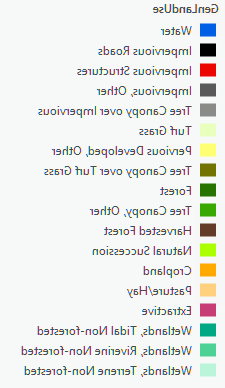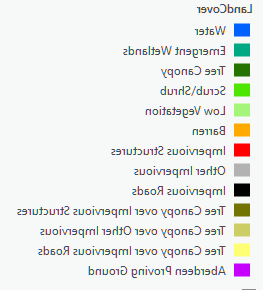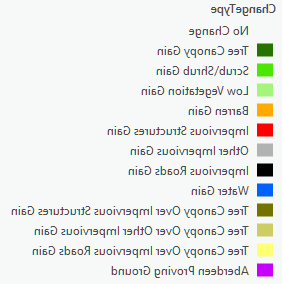
CBP Land Use/Land Cover Data Project
Precision conservation—projects at the right place, the right scale, the right size, the right time, and making sure they are working—is going to redefine how landscape conservation is approached. Using the latest high-resolution datasets to conduct advanced geospatial analysis allows us to better support conservation and restoration planning and implementation watershed-wide.
Learn MoreChesapeake Conservancy, U.S. Geological Survey (USGS) and University of Vermont Spatial Analysis Lab (UVM SAL) are collaborating, with funding from the Chesapeake Bay Program (CBP), to produce 1-meter resolution land cover and land use/land cover datasets for the Chesapeake Bay watershed regional area (206 counties, over 250,000 km2). These data are foundational, authoritative, and transformative looks at the landscape and its management throughout the region.
The production of the CBP 1-meter “land cover” data involves the identification and classification of image objects derived from aerial imagery (National Agriculture Imagery Program, NAIP), above-ground height information derived from LiDAR, and other ancillary data. Land cover represents the surface characteristics of the land with classes such as impervious cover, tree canopy, herbaceous, and barren. In contrast, “land use” represents how humans use and manage the land with classes such as turf grass, cropland, and timber harvest. Producing land use from land cover data requires a variety of ancillary datasets combined with spatial rules that leverage the contextual information inherent in the land cover data. The CBP’s land use/land cover (LULC) data are so named because they represent a combination of cover and use classes (e.g., extractive-barren, solar-herbaceous) that are critical for understanding the impact of human activities on the Chesapeake Bay. For example: one land cover class (herbaceous vegetation) encapsulates both the highest polluting land use (e.g., corn production) or one of the lowest (e.g., natural succession). The LULC data contextualize the land cover classes for decision-making, such as informing outcomes in the Chesapeake Bay Watershed Agreement and serving as the basis for developing the next generation of watershed and land change models.
These data are unique in both the spatial and categorical resolution they hold. This project is the largest dataset for open LULC data at a 1-meter resolution, boasting 900 times more detail than the readily available 30-meter resolution National Land Cover Dataset (NLCD). Additionally, the CBP 1-meter LULC data has over 50 unique classes, providing more categorical context than the 13-class CBP land cover data or the 17-class NLCD data. This detailed classification scheme is necessary to ensure these data are widely applicable for supporting data-driven decision-making by the Chesapeake Bay Program and other regional stakeholders.
Visit our LULC Viewer to access county-scale LULC data. State-scale mosaics can be found at the ScienceBase release
LULC Viewer
Land Use Legend

Land Cover Legend

In addition to the LULC and land cover data, the project team has also collaborated to create Land Use/Land Cover Change and Land Cover Change datasets for the entire Chesapeake Bay watershed region. These data elevate LULC mapping from snapshots in time to the beginning of long-term change monitoring. From these data, we begin to see where some LULC classes are experiencing fluctuations—gains and losses, whether permanent or temporary. The land cover change data represents 1-meter pixel-scale differences in the imagery and ancillary data showing shifts from one class to another between time one (2013/14) and time two (2017/18). This spectral analysis identifies shifts that were then used to inform a land use change detection.
These spatial data layers have been summarized in tabular change matrices that are available for download, to help stakeholders understand shifts in land use/land cover between 2013/14-2017/18. The pivot tables show changes to and from each individual class, and are available for both the detailed 54 class scheme and generalized 18 class scheme.
Change from 2013/14-2017/18
Note: If you are prompted for login, click the ‘X’ to bypass.
LU Change Legend

Land Cover Change Legend


